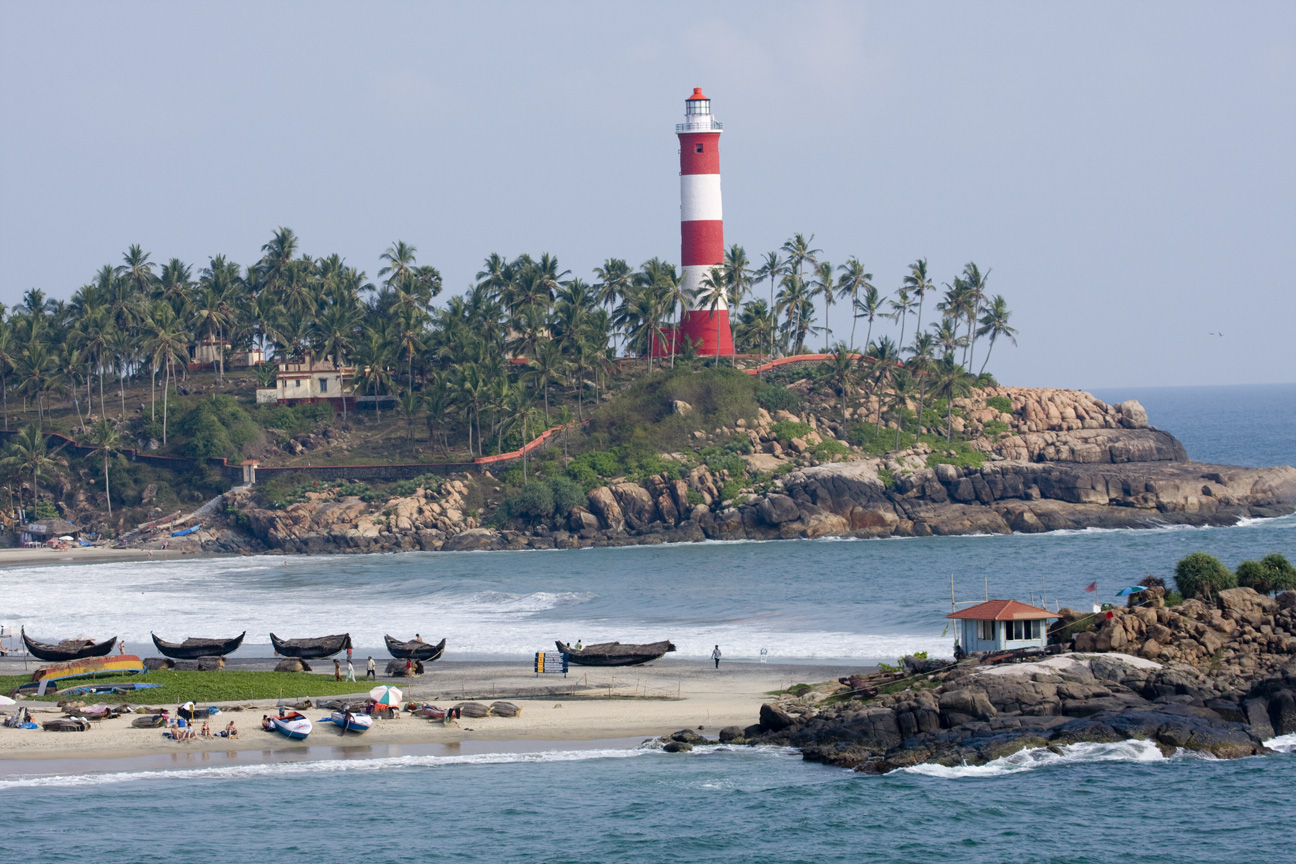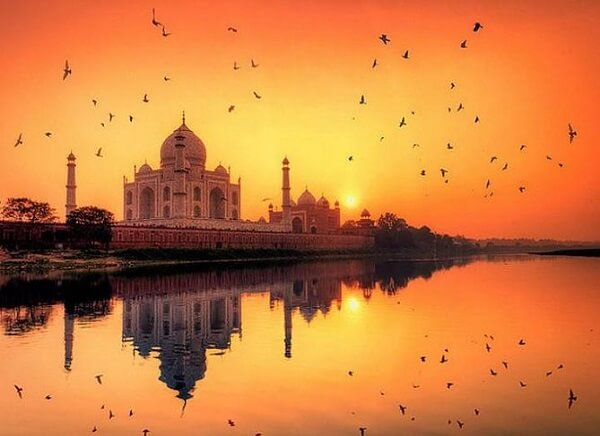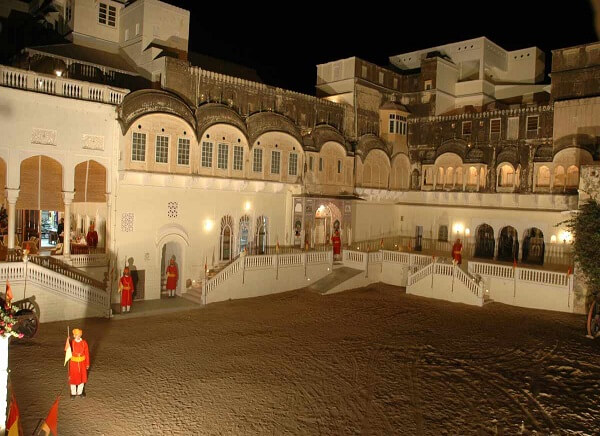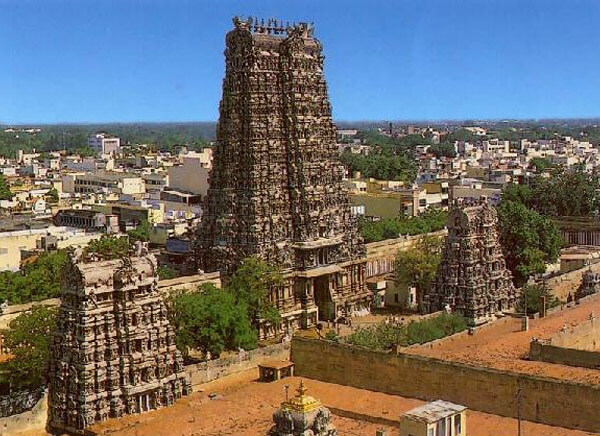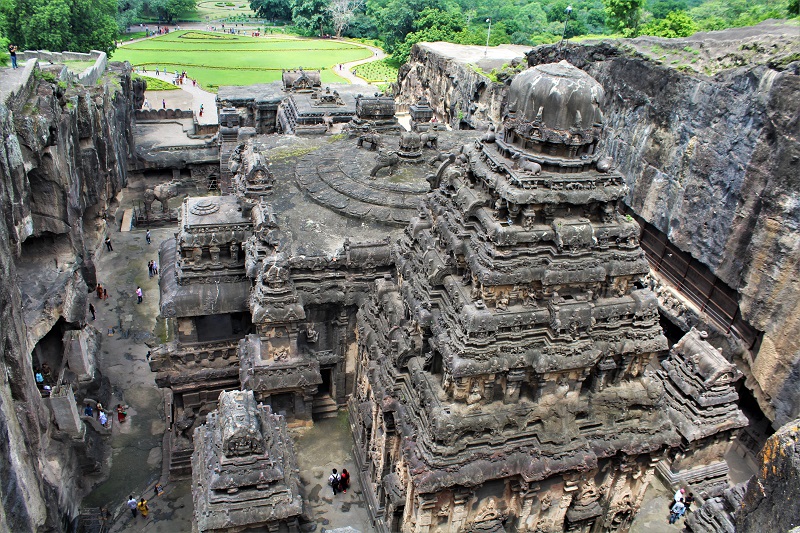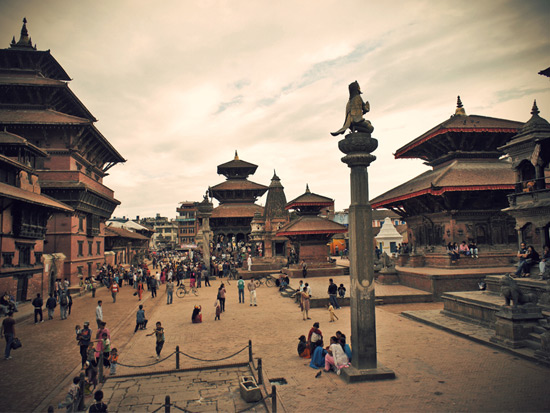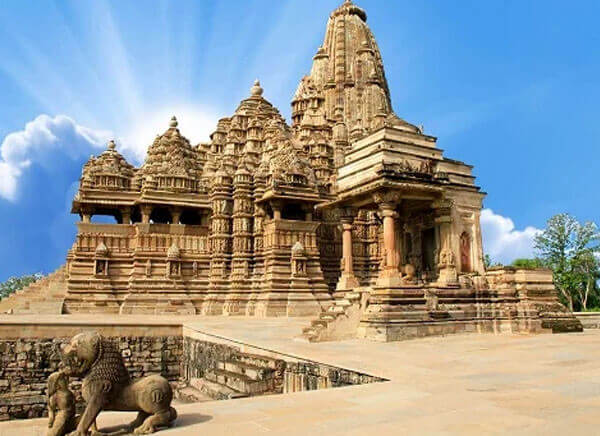List of 38 UNESCO World Heritage Sites In India
India has been the seat of the some early civilizations in the world. Its name appears in gold whenever we browse the history. It has seen some strongly established kingdoms, greatest rulers, spiritual gurus, cultures etc. leaving behind their unique imprints and a rich legacy.
Such legacies and remnants which showcase exemplary creative art, which depict important historical milestones, which encase prodigious natural beauty or which exceptionally represent any culture or civilization have all been given the status of World heritage Sites by UNESCO.
India is home to 38 UNESCO World Heritage Sites. Apart from the 38 inscribed sites, there are around 43 sites, which are on the tentative list. The fact that India has been ruled for a long time by some of the most powerful dynasties has contributed mostly to the inclusion of so many sites to this list.
The rich and diverse culture and heritage of the Indian sub-continent is yet another reason. In this blog, we have presented a list of 38 UNESCO World Heritage Sites, which could help you in learning relevant information about the same.
For the ones who want to go for a heritage tour in India and can’t visit all the attractions then should definitely keep atleast top 10 world heritage sites n mind while planning out their tour:
List of UNESCO World Heritage Sites in India
1. Taj Mahal, Agra
Listed Year : 1983
Taj Mahal was listed as a UNESCO World Heritage Site in the year 1983. Taj Mahal along with being a world heritage site is one of the ‘seven wonders of the world’. This beautiful monument built in white marble is situated in the erstwhile capital of Mughal empire- Agra.
It was built by the Mughal emperor Shah Jahan in the memory of his beloved wife and the love of his life- Mumtaz Mahal; it therefore stands as a symbol of pure and eternal love. Taj Mahal has combined the best architectural features of many Mughal buildings and is thus considered as a masterpiece. Resplendence of Taj Mahal grows manifold at sunrise and sunset.

Read More:
Taj Mahal Travel Guide
- History of Taj Mahal
- Architecture of Taj Mahal
- Inside Taj Mahal
- Taj Mahal Myths
- Reasons to Visit Taj Mahal
- Best Time to Visit Taj Mahal
2. Red Fort, Agra
Listed Year : 1983
Agra Fort was listed as a UNESCO World Heritage Site in the year 1983. It is situated within a distance of just 2.5 km from the popular Taj Mahal in the Mughal city of Agra. It used to be the place of residence of the emperors of the Mughal Dynasty. It is listed as UNESCO World Heritage Site because of its magnificent Islamic architecture.
The fort was built by Akbar on the banks of the Yamuna during 1565-73. It is surrounded by a 2.4 km long, 21 meters high wall of red sandstone. It has two big ornamental gateways, which are decorated with beautiful patterns with white marble inlay and colored glaze. These patterns are representations of living beings, which are not found in any other Islamic building in India.
Entry Fee : The entry fee for the Fort is Rs. 40 for Indians, Rs. 550 for foreigners and no charges for children below 15 years.

Also Read : Complete Travel Guide to Agra Fort
Suggested Tour : Private Day Tour of Taj Mahal & Agra Fort
3. Ajanta Caves, Maharashtra
Listed Year : 1983
Ajanta Caves was listed as a UNESCO World Heritage Site in the year 1983. Situated in Aurangabad, Maharashtra these caves date back to 2nd Century BC. These Buddhist caves are considered as one of the most outstanding artistic pursuits carried out in the olden times. About thirty in number, these remained abandoned for quite a lot of time as they were covered by dense forests before being rediscovered by a British officer.
The surviving mural paintings in the caves are one of the finest paintings which represent the art of ancient India and are many times used as an inspiration by present day artists.

Also Read : Most Famous Caves Near Mumbai
Read More: Ajanta & Ellora Caves Information
4. Ellora Caves, Maharashtra
Listed Year : 1983
Ellora Caves was listed as a UNESCO World Heritage Site in the year 1983. A heritage tour in Maharashtra will take you further to the Ellora caves. These caves are a group of Buddhist, Hindu and Jain caves. Built by Rashtrakuta dynasty, these have been put in the list of World heritage Sites by UNESCO due to their cultural importance.
Rock cut architectural style used in the construction of these caves is worth seeing as it looks very brilliant. We can get an idea about the religious concord that prevailed at that time as Hindu, Buddhist and Jain caves were all located at the same site.

Read More: Cave Paintings in India
Suggested Tour: 6 Days – Ajanta and Ellora Caves Tours
5. Sun Temple, Odisha
Listed Year : 1984
Sun Temple was listed as a UNESCO World Heritage Site in the year 1984. Located in Konark, Odisha, this temple dates back to 13th. It was constructed in the form of a very large ratha (a chariot) and was dedicated to the Sun God (as the name also suggests).
Bearing magnificently carved out features (twelve pair of wheels and the chariot being driven by seven horses) with detailed craftswork done, it looks divine and resplendent. What is interesting to note is that the wheels are actually sun dials which makes it a hotspot for the people interested in ancient astronomy.

Read More: Architectural Treasure: Sun Temple, Konark
6. Group of Monuments at Mahabalipuram
Listed Year : 1984
Group of Monuments at Mahabalipuram was declared as a World Heritage site in the year 1984. The Group Monuments of Mahabalipuram are a collection of religious temples situated at the Coromandel Coast of Bay of Bengal, at a distance of around 60 km from the city of Chennai.
The site consists of the main complex of Mahabalipuram and 40 sanctuaries including an open air rock relief. Some of the popular temples are the Ratha Temples like ArjunaRatha, DraupadiRatha, BhimaRatha, the famous cave temples, the structural temples like Shore Temple, Olakkanesvara Temple and other rock monuments. The site has been gaining importance as an archaeological, tourism and pilgrimage site since Independence.
Entry Fee : The entry fee is Rs. 10.0 per person for Indians and Rs. 250 per person for Foreign Nationals.

Also Read : Top Places to Visit in Mahabalipuram
Suggested Tour :
7. Kaziranga National Park, Assam
Listed Year : 1985
Kaziranga National Park was listed as a UNESCO World Heritage Site in the year 1985. Kaziranga National Park is a delight for nature lovers and wildlife explorers. Situated in Assam, it is a home to 2 / 3rd of world’s great one-horned rhinos.
Along with this there are many other fauna and avifauna species as it is biodiversity hotspot. This is why it has been given the highest amount of protection under Indian laws that relate to wildlife conservation. The national park with its beautiful landscape and pristine surroundings is a popular destination for people who want to go on a nature heritage tour.

Read Also:
Suggested Tour:
Recommended Luxury Train Tour: 7 Nights 8 Days Delhi to Mumbai Maharajas’ Express Train – Adventurous Drive at Ranthambore National Park
8. Manas Wildlife Sanctuary, Assam
Listed Year : 1985
Manas Wildlife Sanctuary was declared as a UNESCO World Heritage Site in December in the year 1985. This national park situated in the northeastern state of Assam. It falls within the jurisdiction of 7 districts of Assam. The name of the park is derived from the Manas River, which flows right through the heart of the Park.
The park consists of two major biomes, the grassland biomes and the forest biomes. It is home to pygmy hogs, Indian rhinoceros, wild Australian buffaloes, capped langur, wild pigs, Malayan Giant Squirrel, Chinese Pangolin, etc. It is rich flora vegetation makes it one of the richest biodiversity areas in the world.
Due to its rich and diverse flora and fauna and rare and endangered endemic wildlife, it was declared as a UNESCO World Heritage. It is also regarded as a Project Tiger Reserve and Elephant Reserve.
Entry Fee : The entry fee for the park is Rs. 20 for Indians and Rs. 250 for foreign tourists. Rs. 300 per jeep. Camera and camcorder charges are differently charged.

Also Read : Seven Sisters of India – Complete Information About North East India States
Suggested Tour : 7 Days – North East India Wildlife Tour
9. Keoladeo National Park, Rajasthan
Listed Year : 1985
Keoladeo National Park was declared as a UNESCO World Heritage Site in December in the year 1985. Keoladeo National Park is a famous avifauna sanctuary situated in Bharatpur, Rajasthan. The Park is home to over 300 species of birds, 370 floral species, 50 species of fish and variant species of lizards, amphibians, snakes, turtles, etc. It is also a popular site for ornithological studies.
The founder of World Wildlife Fund Mr. Peter Scott declared it as one of the World’s Best Bird Areas. It was established in the year 1982 and listed as a UNESCO World Heritage Site for being a habitat of rare and endangered species. It covers an area of around 29 sq km.
Entry Fee : The entry fee for the Park is Rs. 75 for Indians and Rs. 200 for foreign nationals.

Also Read :
Bharatpur Travel Guide
- How to Reach Bharatpur
- Best Time to Visit Bharatpur
- Tourist Attractions in Bharatpur
- Where to Stay in Bharatpur
- What to Eat in Bharatpur
- Shopping in Bharatpur
- Things To Do in Bharatpur
Suggested Tour :
10. Fatehpur Sikri, Agra
Listed Year : 1986
Fatehpur Sikri was listed as a UNESCO World Heritage Site in the year 1986. Fatehpur Sikri was the erstwhile capital of Mughal dynasty before being abandoned by Akbar due to complete failure of water supply system. This was constructed as a well planned city by Akbar when he decided to shift his capital from Agra.
It has been conferred the status of World Heritage Site by UNESCO because of the reason that it stands as one of the best examples of Mughal architectural finesse. A heritage tour to Fatehpur Sikri will let you explore some of its very impressive features like the Diwan-e-Aam, Diwan-e-Khas, Jama Masjid etc. Buland Darwaza (literal meaning: The great gate) stands out in the whole complex because of it being the largest gateway in the whole world.

Read More :
Also Read: 10 World Heritage Sites to Visit with Maharajas’ Express
Agra Travel Guide
- How to Reach Agra
- Best Time to Visit Agra
- Things to do in Agra
- Tourist Attractions in Agra
- Reasons to Visit Agra
- Famous Gardens in Agra
- Famous Festivals in Agra
- What to Wear in Agra
11. Khajuraho Group of Monuments
Listed Year : 1986
Khajuraho Group of Monuments was listed as a UNESCO World Heritage Site in the year 1986. Khajuraho is a group of temples located in the heart of India – Madhya Pradesh showcasing the architectural prowess of craftsmen of the Rajput Chandela dynasty. These were a group of 85 temples out of which only 20 have survived various attempts of demolition by Muslim rulers and neglect thereafter.
Standing as one of the best examples of carving work, the exterior walls of these temples feature erotica, sculptures representing daily life and symbolic art depicting ancient Indian values. A heritage tour to Khajuraho temples will thus give you some excellent photographic opportunities which you should never miss out on.

Read On: 6 Tourist Attractions You Will Never Know About Khajuraho
Khajuraho Travel Guide
- History of Khajuraho
- How to Reach Khajuraho
- Tourist Attractions in Khajuraho
- Shopping in Khajuraho
- Museum in Khajuraho
- Temples in Khajuraho
Suggested Tour:
- 2 Days – Khajuraho Tour
- 3 Days – Khajuraho Private Tour from Delhi
- 8 Nights – Golden Triangle with Khajuraho Tour
- 10 Days – Golden Triangle with North India Temple
12. Churches and Convents of Goa
Listed Year : 1986
The churches and convents of Goa was declared as a UNESCO World Heritage Site in December in the year 1986. These are a set of religious monuments located in Old Goa. The monuments include Churches and Convents of Goa, Sé Cathedral of Goa, Basilica of Bom Jesus, Church of St. Francis of Assisi, Chapel of Santa Catarina, Ruins of the Church of St. Augustine, and Church of Divine Providence.
The site was declared as a World Heritage Site due to the following reasons:
- They contributed to the dissemination of Western art forms in Asia
- They perfectly illustrates the work of evangelization
- The tomb of Francisco Xavier illustrates the influence of the Catholic religion in Asia

Also Read : How Many Days Are Required To Visit Goa
Goa Travel Guide
- History of Goa
- Culture of Goa
- How to Reach Goa
- What to Wear in Goa
- Churches in Goa
- Temples in Goa
- Historical Places in Goa
- What to Eat in Goa
- Shopping in Goa
- Beaches in Goa
- Water Sports in Goa
- Shopping Markets in Goa
- Street Foods in Goa
- Wildlife in Goa
- Museums in Goa
13. Group of Monuments at Hampi
Listed Year : 1986
Group of Monuments at Hampi was declared as a UNESCO World Heritage Site in the year 1986. These are situated in Karnataka. Often referred to as Hampi, it served as the capital of the Vijayanagara Empire during the 14th century. When the Empire was defeated by Muslim sultanates, Hampi was left in ruins.
These ruins today spread over an area of 4100 hectares and consist of sacred complexes, riverside features, forts, temples, mandapas, shrines, memorial structures, water structures, pillared halls, and others. It was declared as a UNESCO World Heritage Site describing it as a grandiose site of more than 1600 remains of the Hindu Kingdom. The monuments are categorized into different complexes.
Entry Fee : The entry to each complex varies accordingly ranging from somewhere between Rs. 10-30 for Indians and around Rs. 500 for foreigners.

Also Read : Top 5 Things To Do In Hampi
Suggested Tour :
14. Great Living Chola Temples, Tamilnadu
Listed Year : 1987
Great Living Chola Temples was listed as a UNESCO World Heritage Site in the year 1987. The Great Living Chola Temples are a group of three temples constructed during the Chola dynasty and they stand true to their name as they represent the splendour of powerful Chola monarchy. The three temples in the group are Brihadisvara Temple, Airavatesvara Temple and the Temple of Gangaikonda Cholapuram.
These are situated in the state of Tamil Nadu and they exhibit the brilliance of Dravidian architecture. During the reigns of Cholas, Tamil literature and art flourished like anything and the Chola temples are a perfect example of that.

Must Read: Top Places for a Temples Experience in South India
Also Read : Top 10 Temples in Tamil Nadu
Suggested Tour:
- 7 Days – South India Pilgrimage Tours
- 11 Days – Tamilnadu and Kerala Tour
- 20 Days – South India Tour from Chennai
- 22 Days – Tamilnadu Cultural Tour
15. Group of Monuments at Pattadakal
Listed Year : 1987
Group of Monuments at Pattadakal was declared as a UNESCO World Heritage Site in the year 1987. These monuments in Karnataka is a collection of 7th and 8th century CE temples of Hindu and Jain religion. The Hindu temples are dedicated to Lord Shiva. The elements of Vaishnavism and Shaktism are also featured in the architecture.
The inscriptions of the temples depict Vedic and Puranic concepts along with stories from Puranas like Ramayana, the Mahabharata, etc. The Jain temple is to a single Jina.The Papanatha and Virupaksha temples depict a unique fusion of Northern and Southern styles. The site was declared as a UNESCO World Heritage Site due to the harmonious blend of northern and southern architectural art forms.
Entry Fee : The entry fee for entering the Pattadakal Temples is Rs. 30 per person.
Also Read :
Suggested Tour :
- Full Day – Tour of Badami, Pattadakal and Aihole
- 14 Days – South India Tour from Bangalore
- 16 Days – Karnataka Tour
16. Elephanta Caves, Maharashtra
Listed Year : 1987
Elephanta Caves was declared as a UNESCO World Heritage Site in the year 1987. Elephanta Caves are a collection of cave temples dedicated to Lord Shiva. There are situated on Elephanta Island within 10 km from Mumbai. The site consists of five Hindu caves, one Buddhist Stupa, and two Buddhist caves. The rock cut stone sculptures of the caves are a perfect amalgamation of Hindu and Buddhist ideologies. The cave has a 20 feet high Trimurti sculpture.
Entry Fee : The entry fee for the Elephanta Caves is Rs. 10 for Indians and nationals from Afghanistan, Bangladesh, Maldives, Myanmar, Nepal, Bhutan, Thailand, Pakistan, and Sri Lanka. For nationals from other countries: Rs. 250.

Famous Maharashtra Tourist Attractions
- Gateway of India
- Marine Drive
- Siddhivinayak Temple
- Dharavi Slum
- Dhobi Ghat
- Dabbawalas
- Mumba Devi Temple
- Ajanta Caves
- Ellora Caves
- Kanheri Caves
- Juhu Beach
- Mahalaxmi Temple
- Film City
- Shri Swaminarayan Temple
- Heritage Buildings
- Kala Ghoda Art
- Chor Bazaar
- Haji Ali Prestigious
- CSIA Airport
- Phoenix Mall Kurla
- Mumbai Markets
- Sri Sri Radha Gopinath Temple
- Linking Road Market Bandra
- Shri Shirdi Sai Baba Temple
17. Sundarbans National Park, West Bengal
Listed Year : 1987
Sundarbans National Park was declared as a UNESCO World Heritage Site in the year 1987. Sundarbans National Park is a tiger reserve in West Bengal. It is home to more than 400 tigers and the largest reserve of the Bengal tiger. It is also home to a diverse species of birds, reptiles, mammals, and invertebrate species. The Park is engrossed by dense mangrove forests. The Park derives its name from the Sundari Tree, which is an exquisite kind of mangrove tree. Due to its rich flora and fauna, it was declared as a UNESCO Heritage Site.
Entry Fee : The entry fee for the park is Rs. 60 for Indians and Rs. 200 for foreigners. For boat entries, Rs. 400 per day is charged for all the zones and Rs. 800 for Netidhopani zone. It is compulsory to have at least one guide in each Boat. Cost of guide is Rs. 400 for Indians and Rs. 700 for foreigners.

Also Read : Top 20 Wildlife Sanctuaries to Visit in India
Suggested Tour : 14 Days – East India Wildlife Tour
18. Nanda Devi and Valley of Flowers National Parks
Listed Year : 1988
Nanda Devi and Valley of Flowers National Parks was declared as a UNESCO World Heritage Site in the year 1988. Nanda Devi National Park is located near the Nanda Devi Peak of Uttarakhand. The park is home to a rich diversity of flora and fauna. Mammals like Himalayan musk deer, mainland serow, and Himalayan tahr are a common sight. The snow leopard, Himalayan black bear, brown bears are also largely seen. There is also a record of 114 birds species and 312 floral species.
Entry Fee : For Nanda Devi National Park, entry fee for three days is Rs. 40 for Indians and Rs. 150 for foreigners. Charge per additional day is Rs. 25 for Indians and Rs. 150 for foreigners.

Valley of Flowers National Park is situated in North Chamoli, Uttarakhand is popular for the endemic alpine flowers and the wide variety of flora. It is also home to certain rare and endangered animals like Asiatic black bear, snow leopard, brown bear, musk deer, red fox and blue sheep. Nanda Devi was declared as a Heritage Site by UNESCO and was renamed to add Valley of Flowers National Park in 2005.
Entry Fee : For Valley of Flowers National Park, a three-day pass has to be made, which costs Rs. 150 for Indians and Rs. 600 for foreigners. Charge per additional day is Rs. 50 for Indians and Rs. 250 for foreigners.

Also Read : What is Uttarakhand?
10 Most Beautiful Places to Visit in Uttarakhand
19. Buddhist Monuments at Sanchi
Listed Year : 1989
Buddhist Monuments at Sanchi was declared as a UNESCO World Heritage Site in the year 1989. These are consist of Stupas, monasteries, monolithic Ashokan pillar, temples, sculptural wealth and other Buddhist monuments. The sanctuary is surrounded by Lush gardens. The Stupas are built of the top of hill mostly dedicated to Buddha’s teachings.
The Four Gateways to the Stupa are covered with wonderful architectural carvings. The Ashokan Pillar containing four lions a excellent example of the Greco-Buddhist architectural style. There is also a museum with different items being used by monks.
Entry Fee : The entry fee for Indians and visitors of SAARC and BIMSTEC is Rs. 10. The entry fee for Foreigners is Rs. 250. Entry for children up to 15 years is free.

20. Humayun’s Tomb, Delhi
Listed Year : 1993
Humayun’s Tomb was declared as a UNESCO World Heritage Site in the year 1993 as it was the first garden-tomb built in India. Humayun’s Tomb is a perfect blend of Persian, Turkish and Indian styles of Islamic architecture. It is a typical Char Bagh garden with four gateways dividing the garden into four smaller segments.
The grand structure, perfectly symmetrical, is at the center of the garden on a 7m high stone platform. The structure is built with red stand and surmounted with white marble domes. The height of the tomb is 47 m and breadth is 91 m. The entrance to the tomb is led by two double storeyed arched gateways.
Entry Fee : The entry fee of Humayun’s Tomb is Rs. 30 per head for Indians, Rs. 500 per person for Foreigners, and Rs. 25 for video filming.

Also Read : What are the Offbeat Things to Do in Delhi
Popular Delhi Attractions
- Red Fort
- Qutub Minar
- India Gate
- Jantar Mantar
- Lotus Temple
- Raj Ghat
- Humayun Tomb
- Dilli Haat
- ISKCON Temple
- Jama Masjid
- Akshardham
- Connaught Place
- Tomb of Safdarjung
- Garden of Senses
- Hauz Khas Complex
21. Qutub Minar, Delhi
Listed Year : 1993
Qutub Minar was declared to be a World Heritage Site by UNESCO in 1993. It was built by Qutab-Ud-Din Aibak as a victory tower to commemorate the triumph of Mohd. Gauri over his arch rival Prithvi Raj Chauhan (A Rajput King) and its construction was completed by Qutub-Ud-Din Aibak’s successors hence.
Being the tallest monument in Delhi and the second tallest minaret in India, it is a remnant of the grandeur of Delhi Sultanate. What is noteworthy is that several parts of the Minar embrace Arabic and Persian inscriptions and Kufic calligraphy which tell the history of its construction and subsequent repair works.

Read Also: Top 5 Places To See on a One Day Delhi Tour
Want to visit Delhi in a luxurious way : 3 Nights 4 Days Delhi Tour Maharajas’ Express Train
Delhi Travel Guide
- How to Reach Delhi
- Culture of Delhi
- Street Food in Delhi
- Best Time to Visit Delhi
- Things to do in Delhi
- Museums in Delhi
- What to Wear in Delhi
- Churches in Delhi
22. Mountain Railways of India
Listed Year : 1999, 2005, 2008
The Mountain Railways of India was declared as a UNESCO World Heritage Site in the year 1999, 2005, 2008 include Darjeeling Himalayan Railway (1999), the Nilgiri Mountain Railway (2005), and the Kalka–Shimla Railway (2008). The Darjeeling Himalayan Railway is the first hill passenger railway implemented with indigenous engineering solutions. The Nilgiri Mountain Railway, at an elevation of 326 m to 2203 m employed the latest technology of that time. The Kalka Shimla Railway is a 96-km long, single track working rail link in Shimla.

Also Know : 20 Best Train Journeys in India
Also Read : Him Darshan Express Train Kalka to Shimla – A Vistadome Train
Suggested Tour :
- 6 Days – Shimla Manali Tour Packages
- 5 Days – Darjeeling Tour Packages
- 7 Days – Darjeeling Gangtok Tour Packages
- 8 Days – Himachal Hill Station Tour
23. Mahabodhi Temple Complex, Bodhgaya
Listed Year : 2002
Mahabodhi Temple Complex was listed as a UNESCO World Heritage Site in the year 2002. It is one of the most important Buddhist pilgrimage sites. The Mahabodhi Temple translates to the temple of great (maha) awakening (Bodhidharma). History lays down that Gautama Budhha sat under a peepal tree to meditate where he attained nirvana (enlightenment). This tree was called as the Bodhi tree and when Asoka the great visited this site, he constructed a temple besides the Bodhi Tree in 260 BC which is the Mahabodhi Temple.
Knowing its past we can think of the reason why Mahabodhi temple complex has been designated as one of the World Heritage Sites. According to Jataka legends, earth’s navel lies at the place where Bodhi Tree is.

Read More: India’s Top 5 Hindu Temples
Suggested Tour: 10 Days – Golden moments in India Tour Package
24. Rock Shelters of Bhimbetka
Listed Year : 2003
Rock Shelters of Bhimbetka was declared as a UNESCO World Heritage Site in the year 2003. The Rock Shelters of Bhimbetka represent an archeological site of Paleolithic, Mesolithic, and historic period. The site is distributed over an area of 10 km consisting of seven hills and 750 rock shelters. Amongst all, the auditorium cave is an important feature of the shelters surrounded by quartzite towers. The shelters contain numerous paintings some of which are believed to be 1000 years old.
Entry Fees : The entry fees for Bhimbetka caves and rock shelters is Rs. 10 per head for Indians, 100 per head for foreigners, 50 per Light motor vehicle for Indians, 200 per Light motor vehicle for foreign tourists, 100 per mini bus for Indians, and Rs. 400 per mini bus for foreigners.

Also Read : 20 Most Famous Caves In India
25. Chhatrapati Shivaji Terminus, Mumbai
Listed Year : 2004
Chhatrapati Shivaji Terminus was declared as a UNESCO World Heritage Site in the year 2004. This historical terminal train station in Mumbai was built by a British Architectural Engineer in an Italian style of architecture. It was earlier named after Queen Victoria and renamed as Chhatrapati Shivaji Terminus in 1996 to honor Shivaji Bhonsle I. The terminus has a total of 18 platforms. Seven platforms serve suburban trains and eleven platforms serve long distance trains.
Entry Fee : There is no entry fee for the terminus.

Also Read : 10 Best Places to Visit Near Mumbai International Airport
Suggested Tour :
26. Champaner-Pavagadh Archaeological Park
Listed Year : 2004
Champaner-Pavagadh Archaeological Park was declared as a UNESCO World Heritage Site in the year 2004. This Archaeological Park is situated in the Panchmahal district in the state of Gujarat. There are eleven different types of monuments in the park like mosques, temples, tombs, terraces, wells, walls and more relating to 8th-14th century. The Kalika Mata Temple located at a height of 800 m is an important Hindu pilgrimage site. The archeological site is a perfect blend of Hindu and Muslim culture and architecture.
Entry Fee : The entry fee for the park is Rs. 10 per person and Rs. 65 per cable car.

27. Red Fort Complex, Delhi
Listed Year : 2007
Red Fort Complex was declared as a UNESCO World Heritage Site in the year 2007. This historic fort is situated in Delhi, which served as the place of the main residence of the Mughal Emperors. The Fort built with red sandstone covers an area of 254.67 acres enclosed by high defensive walls. The fort is octagonal in shape. The floral decorated walls and double domes in the fort’s buildings reflect features of Mughal architecture.
Red Fort was listed as a World Heritage Site by UNESCO due to its innovative architectural style, which influenced the construction of different other historical monuments in Delhi, Agra, Rajasthan, and many other Indian states.
Entry Fee : The Entry fee of Red Fort for Indian citizens and citizens of SAARC and BIMSTEC is INR 35 per person. For foreign tourists, the ticket price is INR 500 per person. Entry for children below the age of 15 years is free.

Also Read : What to do in Delhi for 2 Days
28. The Jantar Mantar, Jaipur
Listed Year : 2010
Jantar Mantar was declared as a UNESCO World Heritage Site in the year 2010. The Jantar Mantar is a collection of astronomical instruments built located in Jaipur city of Rajasthan. The site is home to the world’s largest stone sundial. These astronomical instruments allow humans to observe astronomical positions with naked eyes.
They are also used for measuring time, ascertaining declinations of planets, predicting eclipses, determining celestial altitudes, tracking location of stars and related ephemerides. UNESCO declared Jantar Mantar as a World Heritage site describing it as one of the most significant and best preserved historic observatories of India.
Entry Fee : The entry fee of Jantar Mantar is Rs. 50 per Indian citizen, 15 per Indian student, 200 per foreign tourist, and Rs. 100 per foreign student.

Also Read : How to Experience the Best of Jaipur in Just 48 Hours?
Jaipur Travel Guide
- History of Jaipur
- Culture of Jaipur
- Facts About Jaipur
- Best Time to Visit Jaipur
- How to Reach Jaipur
- Festivals in Jaipur
- Shopping in Jaipur
- Things to do in Jaipur
- What to Eat in Jaipur
- What to Wear in Jaipur
- Where to Stay in Jaipur
- Attractions in Jaipur
- Desserts in Jaipur
29. Western Ghats
Listed Year : 2012
Western Ghats was declared as a UNESCO World Heritage Site in the year 2012. The Western Ghats, often referred to as the Great Escarpment of India are a mountain range covering an area of 140,000 square kilometers. It is home to a rich diversity of flora and fauna. The biodiversity of the Western Ghats represents unique biophysical and ecological processes. It is recognized as one of the world’s eight ‘hottest hotspots’ of biological diversity.
39 Properties of Western Ghats were designated as World Heritage Sites covering wildlife sanctuaries, national parks and reserve forests in the state of Kerala (20), Tamilnadu (5), Karnataka (10) and Maharashtra (4).
The Western Ghats can be reached by bus from some of the major cities like Kochi, Coimbatore, and Madurai. The nearest airport is Cochin International Airport and the nearest railway station is Theni Railway Station.

30. Hill Forts of Rajasthan
Listed Year : 2013
Hill Forts of Rajasthan was declared as a UNESCO World Heritage Site in the year 2013. The Rajasthan Hill Forts is a collection of six historical forts based in the Aravali range. The six forts are Chittorgarh Fort, Kumbhalgarh Fort, Ranthambore Fort, Gagron Fort, Amer Fort, and Jaisalmer Fort. The Fort features an eclectic architecture that bears testimony to the Rajput Kingdom. Some of these forts are fortified with 20 km long wall.
Entry Fee : The entry price is different for all the six forts ranging from Rs. 10-100 for Indians and uptoRs. 500 for foreigners. Entry to the Jaisalmer Fort and Gagron Fort is free.

Also Read : 20 Most Visited Forts and Palaces in Rajasthan
Rajasthan Travel Guide
- History of Rajasthan
- Best Time to Visit Rajasthan
- How to Reach Rajasthan
- Weather in Rajasthan
- Things to Do in Rajasthan
- Places to See in Rajasthan
- Weekend Getaways in Rajasthan
- Cuisines of Rajasthan
- Rajasthan Fast Facts
- Festivals in Rajasthan
31. Rani ki Vav, Gujarat
Listed Year : 2014
Rani ki Vav was declared as a UNESCO World Heritage Site in the year 2014. Rani ki Vav is a stepwell situated in the Paltan town of Gujarat, located on the banks of Saraswati River. The stepwell is designed as an inverted temple. It is divided into seven levels of stairs. Its construction features the Maru-Gurjara architectural style, which requires complex technique and expertise.
The well measures approximately 65 meters long, 20 meters wide, and 28 meters deep. The well consists of more than 1500 major and minor sculptures of different mythological characters and other religious and secular images.
Entry Fee : The entry fee for Indians is Rs. 5 per person whereas for foreigners, it is 2 USD per person.

32. Great Himalayan National Park
Listed Year : 2014
Great Himalayan National Park was declared as a UNESCO World
Heritage Site in the year 2014. This National Park is located in Kullu, Himachal Pradesh. It spreads over an area of around 1,171 km2 and is home to a rich diversity of flora and fauna. A total of 31 species of mammals, 181 bird species, 9 amphibians, 11 annelids, 127 insects, and 17 mollusks has been recorded along with other species of fauna. The wide altitude range of the park supports a great diversity of plant life. It was declared as a UNESCO World Heritage Site for its outstanding significance for biodiversity conservation.
Entry Fee : The entry Fee for Great Himalayan National Park is Rs. 50 per person for Indians and Rs. 200 per person for foreigners.

Also Read : 10 Best Places for Wildlife Photography in India
Suggested Tour : 8 Days – Himachal Hill Station Tour
33. Archaeological Site of Nalanda Mahavihara at Nalanda, Bihar
Listed Year : 2016
Archaeological Site of Nalanda Mahavihara at Nalanda was declared as a UNESCO World Heritage Site in the year 2016. The archeological site of Nalanda Mahavihara in Bihar comprises of remains of an institution of
monastic and scholastic studies that relate to the 3rd to the 13th century CE.
It consists of stupas, viharas, shrines, and important artworks of stones and
metals. The main attractions of the archeological site are Nalanda
archeological museum, Xuanzang Memorial Hall, Nalanda Multimedia Museum, and Nalanda Vipasana Centre.
Entry Fee : The entry fee is Rs. 15 per person for Indians, Rs. 200 per person for foreigners, and Rs, 25 additional per video camera.

34. Khangchendzonga National Park, Sikkim
Listed Year : 2016
Khangchendzonga National Park was declared as a UNESCO World Heritage Site in the year 2016. It is situated at the heart of the Himalayan range in Sikkim. It is the first mixed heritage site of India for it is home to a unique topography consisting of plains, hills, lakes, valleys, glaciers, snow capped mountains, dense forests, including the mountain peak Kanchenjunga. The park contains a Tholung Monastery and a Gompa. Situated at an elevation of 1,829 meters, it covers an area of 849.50 sq km.
Entry Fee : The entry fee is Rs. 200 per person for Indians, Rs. 400 per person for foreigners, Rs. 40 per Indian student, Rs. 20 per guide and Rs. 40 per tent.

Also Read : 20 Best Places to VIsit in Sikkim
Suggested Tour : 5 Days - Sikkim Tour Package
35. The Architectural Work of Le Corbusier, Chandigarh
Listed Year : 2016
The Architectural Work of Le Corbusier was declared as a UNESCO World Heritage Site in the year 2016. This is a government owned compound in Chandigarh, Punjab also known as the Chandigarh Capitol Complex. The complex comprises of three buildings, three monuments, and a lake, which are an architectural work of Architecture Le Corbusier. The buildings and monuments consist of the Palace of Legislative Assembly, Secretariat building, an open hand monument, and the tower of shadows.
Entry Fee : There is no entry fee for the The Architectural Work of Le Corbusier

36. Historic City of Ahmedabad
Listed Year : 2017
The Historic City of Ahmedabad was declared as a UNESCO World Heritage Site in the year 2017. It is often referred to as Old Ahmedabad was founded by one of the rulers of Gujarat Sultanate, which served as an important capital of their Kingdom. Situated on the banks of Sabarmati River, the architecture of the city, its historic forts and gates represent the rich architectural heritage of the sultanate period.

37. The Victorian and Art Deco Ensemble of Mumbai
Listed Year : 2018
The Victorian and Art Deco Ensemble of Mumbai was declared as a UNESCO World Heritage Site in the year 2018. It refers to a group Victorian Neo-Gothic buildings of the 19th and Art Deco Buildings of the 20th century Mumbai, Maharashtra. The buildings are set against an oval ground. The Victorian Buildings have the features of Indian architecture like balconies and verandas to suit the climate of the region.
The Art Deco architectural design combined with the Indian architectural style creates a unique blend of Indo-Deco duo. Declared as a UNESCO World Heritage site in 2018, the site bears a testimony to the modernization witnessed by the city during the 19th and 20th centuries.

38. Jaipur
Listed Year : 2019
Jaipur was declared as a UNESCO World Heritage Site in the year 2019. Jaipur- the pink city of India in the state of Rajasthan stands out from other Indian cities due to its magnificent architecture, Forts, Monuments, Palaces, Art and Craft, Culture, Astrological significance and more. The architectural plan to build the city was borrowed from the Grid Plan model from the Western countries.
All the buildings created on main streets like markets, temples, shops, etc, have uniform facades. The urban planning of the city borrows ideas from Hindu and Mughal cultures as well. It serves as a major commercial city yet safeguarding the interest of local artisans and traditions.

Also Read : Walled City Jaipur Designated as New UNESCO World Heritage Site
Popular Jaipur Attractions
- Amer Fort
- City Palace
- Hawa Mahal
- Jantar Mantar
- Jal Mahal
- Nahargarh Fort
- Jaigarh Fort
- Galta ji Temple
- Birla Temple
- Govind Dev ji Temple
- Moti Dungri Temple
- Kanak Vrindavan Valley
- Sisodiya Rani Ka Bagh
- Vidhyadhar Garden
- Albert Hall Museum
- Dolls Museum
Popular Tour Packages to Explore the Heritage Sites in India :
- 6 Days – Golden Triangle with India Heritage Beauty
- 10 Days – Heritage with Taj Mahal Tour
- 10 Days – India Cultural Tour Package
- 10 Days – India with Nepal Tour
- 15 Days – Historical Rajasthan With Agra Tour
- 15 Days – Delhi Agra and Rajasthan Tour
Frequently Asked Questions
A. The meaning of a World Heritage Site is a demarcated land or area or landmark that is chosen by the United Nations Educational Scientific and Cultural Organization( UNESCO). This place is
selected by UNESCO on basis of its cultural, historical or scientific significance, and these places are preserved by international treaties.
A. World Heritage Sites are important because they have cultural or physical significance. A UNESCO heritage site can be an ancient ruin or historical structure, building, city, complex, desert, forest, island, lake, monument, mountain, or wilderness area. These sites need protection from human trespassing and overuse. They are part of human history and must be protected.
A. According to the official portal of UNESCO, there are 1121 world heritage sites, out of which 869 are cultural, 213 natural, 53 in danger, 39 transboundary, and two delisted. India has a total of 38 UNESCO World Heritage sites, whereas Italy has the highest number of 55 UNESCO world heritage sites.
A. Maharashtra has the highest number of UNESCO World Heritage Sites. It has four sites that are – the Ajanta Caves in Aurangabad, the Ellora Caves also in Aurangabad, the Elephanta Caves in Mumbai, and the Chhatrapati Shivaji Terminus/Victoria Terminus (Mumbai). It has an extra site on a shared basis – theWestern Ghats (Sahyadri sub-clusters).
A. There are 38 World Heritage Sites in India in 2020, out of which 30 are Historical, 7 are natural, and 1 is mixed. Khangchendzonga National Park is a mixed UNESCO World Heritage Site.
A. UNESCO has 193 member States and 11 associate member States. Some countries are a member of UNESCO but are not members of the UN – Cook Islands, Niue, and Palestine. Palestine has been a non-member state since 2012. Three UN member states are not part of UNESCO – Israel, Liechtenstein, United States.
A. Maharashtra has the maximum number of World Heritage Sites. It has 4 world heritage sites, and one shared site, that is the Western Ghats.
A. There are 7 Natural World Heritage Site in India. And most of them are National Parks, the Kaziranga National Park, Sundarbans National Park, Western Ghats, Manas National Park, Keoladeo National Park, Nanda Devi and Valley of Flowers National Parks, and the Great
Himalayan National Park Conservation Area.
A. Yes, the Taj Mahal is a World Heritage Site. It received the status in 1983 . Taj Mahal is one of the most popular monuments in the world. It is also known as one of the seven wonders of the world. It is a powerful specimen of the Mughal architecture.
A. Yes, the capital city of Rajasthan received the recognition of a world heritage city in the 43rd Session of the UNESCO World Heritage Committee in Baku, 2019. Ahmedabad is another world heritage city in India.
A. Jaipur is known as the Heritage City of India. Along with Ahmedabad, which is also rich in cultural heritage, and it is also a World Heritage City. Ahmedabad was the first Indian city to receive the status in 2017. After that, Jaipur received it in 2019.
A. India has 38 UNESCO World Heritage Sites. The top 10 are the Taj Mahal, Red Fort, Ajanta Caves, Ellora Caves, Elephanta Caves, Sun Temple, Kaziranga National Park, Chola Temples, Sundarbans National Park, and Bodhi Temple.
A. The latest addition to the list of UNESCO World Heritage Sites in India is the Khangchendzonga National Park, which is of mixed heritage. It was added to the list in 2016. After that, in 2019, Jaipur received the honor of being a World Heritage City.
A. Karnataka has 3 World Heritage Sites. It is Hampi, Western Ghats, and Group of Monuments at Pattadakal. Hampi is an ancient village from the 7th century, whereas Pattadaka, Ainore, and Badami make a group of experimental temples.
A. Rajasthan has three World Heritage Sites. The city of Jaipur itself is a heritage City, then the Keoladeo National park. Moreover, the forts of Rajasthan are also World Heritage Sites – Ranthambore, Chittorgarh, Kumbhalgarh, Amber Palace, Gagron, and Jaisalmer.
A. There are 3 world heritage sites in Agra. One is the famous TajMahal, Agra. Then there is the Agra Fort. And lastly, Fatehpur Sikri. It is a fort complex and contains the largest mosque in India, the Jama Masjid.
A. There are also 3 world heritage sites in Madhya Pradesh. They are The Khajuraho Group of Monuments recognized in 1986. Then the Buddhist Monuments at Sanchi recognized in 1989, and the Rock Shelters of Bhimbetka recognized in 2003.
A. North India has the majority of UNESCO World Heritage Sites in India. It has 27 world heritage sites. Some of them are – Agra Fort, TajMahal, Fatehpur Sikri, Nanda Devi and Valley of Flowers National Parks, Humayun’s Tomb, Qutb Minar, and its Monuments, Mahabodhi Temple Complex at Bodh Gaya, Bihar and the Red Fort in Delhi.
A. There are 7 UNESCO World heritage sites in South India. One of them is the famous natural ecosystem of western ghats. The others are Nilgiri Mountain Railways, Mahabalipuram, Chola Temples, Hampi, Pattadakal, and churches and convents of Goa.
A. There are 4 heritage sites in Maharashtra. By far, it is the Indian state with the highest number of UNESCO World heritage sites. The four sites are Ajanta Caves, Ellora Caves, Elephanta Caves, Chhatrapati Shivaji Terminus/Victoria Terminus, and the Western Ghats.


